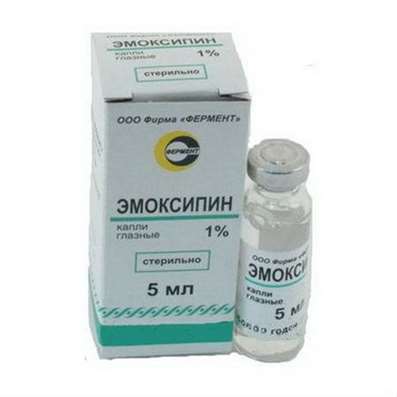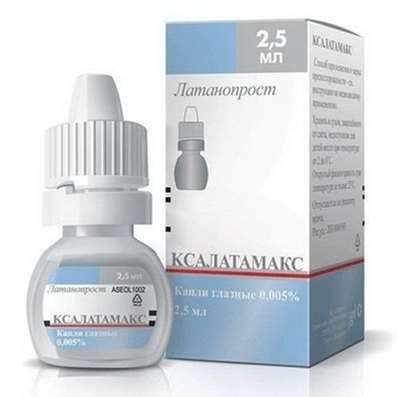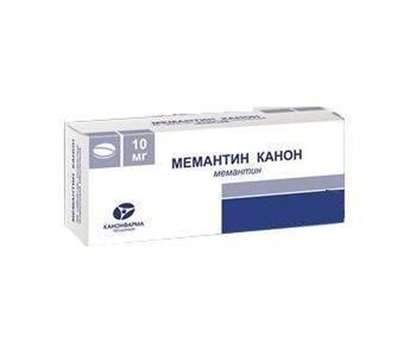Cortisol and sport
12 Dec 2016
Cortisol is the main catabolic hormone which destroys proteins, promotes fat accumulation, and also increases glucose level in blood.
Cortisol is developed in response to a stress, exhaustion, physical activity, starvation, fear and other emergency situations. Cortisol is also called stress hormone, it is intended to mobilize nutrients: proteins of an organism (including muscular) collapse to amino acids, and a glycogen to glucose. Level of glucose and amino acids increases in blood in order that in emergency situation the organism had construction material for restoration.
In bodybuilding cortisol plays mainly negative role: causes collapse of muscles, adjournment of fat, an extension on a body, an acne, osteoporosis. Therefore many sports additives and medicines are intended to reduce influence of cortisol and to start anabolism.
According to results of the Swedish probe, impact of automobile, railway and aviation noise can be a physiological stressor which increases development of cortisol, promoting increase in fatty deposits.
Regulation of development of hydrocortisone in cortex of adrenals
Final target organ gypotalamo is pituitary and adrenal system of cortex of adrenals cosecretes a hydrocortisone, and this process in normal conditions is characterized by circadian fluctuations with the maximum level of secretion in the morning and the subsequent its depression during the day to the minimum value about midnight (Krieger et al., 1971). The hydrocortisone possesses a series of physiological functions. Here maintenance of water-sodium balance and control of arterial pressure, maintenance of a homeostasis of glucose, lipogenesis, suppression of function of osteoblasts and anti-inflammatory action, including suppression of an immune response belong (Stewart, 2003). The hydrocortisone is under the influence of adrenocorticotropic hormone (AKTG) which secretion happens in a forward share of a pituitary body (adenohypophysis) (Stewart, 2003). Interaction of AKTG with Adrenocorticotrophinum receptors in a cortex of adrenals leads to stimulation of development and secretion of a hydrocortisone (Catalano et al., 1986). The hydrocortisone inhibits secretion of stimulators of the secretion by means of a chain of the return negative communication which provides suppression of secretion of AKTG in a pituitary body, and also regulates the maintenance of kortikoliberin and arginineantidiuretic hormone (AVP) at the level of a hypothalamus (Keller-Wood, Dallman, 1984; Stewart, 2003). This chain of feedback doesn't allow excessively long and inappropriate periods of the increased secretion of a hydrocortisone. Kortikoliberin and argininevasopressin are formed in melkokletochny area of core of a hypothalamus (Pelletier et al., 1983) are also the main regulators of secretion of AKTG (Orth, 1992; Kjaer A., 1993). Kortikoliberin represents the peptide consisting of 42 amino-acid remains which was for the first time allocated from a sheep in 1981 (Vale et al., 1981). It possesses the potent stimulating impact on development and secretion of AKTG (Orth, 1992), interacts with highly specific receptors of corticotropic cells (Chen et al., 1993).Intracellular signal transmission is carried out with the participation of system of secondary messengers of a protein kinase And / tsAMF (Aguilera et al., 1983). It is supposed that the augmentation of secretion of kortikoliberin plays the leading role in rising of the AKTG level and a hydrocortisone at the most various forms of acute stress (Chrousos, 1992; Orth, 1992). Argininevasopressin is the peptide consisting of 9 amino-acid remains interacts with specific receptors of corticotropic cells which are known as At, - (sometimes they are designated still by U1) - receptors (Sugimoto et al., 1994). Such interaction leads to activation of system of secondary messengers of a protein kinase With and stimulations of secretion of AKTG (Liu et al., 1990). Kortikoliberin and argininevasopressin are developed in cells of a median eminence of a hypothalamus (Whitnali et al., 1987). Argininevasopressin works sinergichno with kortikoliberiny, strengthening secretion of AKTG during a stress (Gillies et al., 1982; Rivier, Vale, 1983). Besides, an argininevasopressin is one of key regulators of sodium and water balance, and also has potent vasoconstrictive effect (Jard, 1988).
Are suggested about existence of the additional stimulating and inhibiting factors which can influence secretion of AKTG (Grossman, Tsagarakis, 1989; Alexander et al., 1996). Some other hormones, cytokines and neurotransmitters exert impact on гипоталамо - pituitary and adrenal system mainly by means of influence on кортиколиберин and, to a lesser extent, on argininevasopressin. There are proofs that the factor of inhibition of a leukemia (LIF) stimulates pituitary secretion of AKTG (Auemhammer, Melmed, 2000), however physiological value of other factors exerting impact is immediate at the level of a pituitary body or adrenals, remains obscure.
Regulation of level of cortisol at impact of physical activity
Like other strong stressful influences intensive physical activity is the powerful activator hypophysial systems (Luger et al., 1987). Increase in level of cortisol in plasma comes despite increase in intensity of his removal from blood system (Few, 1974). The start fever can even lead to increase in level of cortisol (Suay et al., 1999), and psychological tension before occupation physical exercises can promote increase in level of secretion in response to physical activity (Kaciuba-Uscilko et al., 1994). You can try Tiramin.
Researches with participation of the person and experiments on the highest mammals testify to an important role of arginineantidiuretic hormone in the stimulation of secretion of AKTG induced by physical exercises. Even taking into account restrictions of determination of level of the peripheral blood circulatory system in some researches (Elias et al., 1991; Harte et al., 1995; Inder et al., 1998a), however not in all (Luger et al., 1987; Wittert et al., 1991), increase in maintenance of plasma after classes physical exercises (fig. 17.2) was revealed. Occupation duration physical exercises can be an important factor which along with variations in sensitivity of methods of assessment of allows to explain distinctions in experimental data. In case of performance of physical exercises on condition of constant introduction of quantity providing full saturation of receptors of cages kortikoliberiny researchers noted substantial increase of the AKTG level and a cortisone in comparison with initial level (Smoak et al., 1991). It indicates existence of additional factors which together with kortikoliberiny have significant effect on the secretion of AKTG induced by physical exercises. In venous outflow of hypophysis of the horse who is exposed to physical activity noticeable increase in level of arginineantidiuretic hormone in plasma is observed (Alexander et al., 1991). At the person as short-term high-intensity physical exercises (Wittert et al., 1991), and long physical activity with the submaximum load (Inder et al., 1998) are followed by increase in level of arginineantidiuretic hormone in plasma, happening to increase in the AKTG level and cortisol. Extent of increase in level of arginineantidiuretic hormone can influence inhibition level exogenous glucocorticoids of the activation induced by physical exercises hypophysial systems (Petrides et al., 1994).In group of 11 men who were carrying out physical exercises after introduction of 4 mg of dexamethasone authentically higher gain of the AKTG level and cortisol after classes by physical exercises has been found in four. At these persons arginineantidiuretic hormone level in plasma was six times higher in comparison with other participants of a research at whom use of dexamethasone suppressed increase in the AKTG level and cortisol (Petrides et al., 1997). The subsequent researches in which conducted studying of persons at whom the overwhelming effect of dexamethasone wasn't observed higher total secretion of cortisol in response to a psychological stress has been found (Singh et al., 1999). Similar researches allow allocating a group of persons, characterized by more expressed response hypophysial systems on various stressful influences which is mediated by arginineantidiuretic hormone. Changes of level of arginineantidiuretic hormone in plasma also correlate with changes of osmotic pressure of plasma, however increase in content of arginineantidiuretic hormone during the intensive occupations physical exercises is higher, than it could be expected only owing to change of osmotic pressure (Wade, Claybaugh, 1980). In particular, increase in level of arginineantidiuretic hormone in plasma correlates with changes of osmotic pressure during long physical exercises with the submaximum load, however such interrelation vanishes when performing exercises with stupenchatovozrastayushchy loading before exhaustion (Inder et al., 1998a). Reduction of volume of plasma can be one more cause of increase in secretion of arginineantidiuretic hormone (Robertson, Ahtar, 1976).
Opioidiy peptide Ч β-endorphin, is formed of a proopiomelanokortin (POMK) (Morley, 1981). Earlier was considered that in ekvimolyarny ratio with AKTG. It has been conducted several researches directed to studying of changes of secretion of β-endorphin, caused by occupations physical exercises (Carr et al., 1981; Rahkila et al., 1987; Petraglia et al., 1988; Schwarz, Kindermann, 1989). The main problem for the majority of these researches is that in most cases when using the radio immunoanalysis β-lipotropin and β-endorphin 100% possess. Thus, the most part of the immunoreactive material revealed at a β-endorphin research, cannot show opioid activity. Use of more specific methods of the immunoradiometric analysis has shown that normal in the absence of a stress p-endorphin at most of people doesn't come to light (Gibson et al., 1993).
The real β-endorphin during the occupations physical exercises is found in the peripheral blood circulatory system only in 50% of persons and represents only a small part of β-eidorfin-immunoreaktivny material (Harbach et al., 2000). At the same time it seems that physical activity increases the level of endogenous opioid peptides (Thoren et al., 1990). The injection of nalokson the antagonist of opioid receptors Ч leads to increase in subjectively tested effort during performance of physical exercises (Grossman et al., Sgherza et al., 2002). The data confirming the increased level of the opioids possessing the central action in an organism of well trained athletes are obtained that can be caused by regular physical trainings (Inder et al., 1995). Basal level of β-endorphin in plasma correlates with the changes of the AKTG level caused by application of a nalokson which is an indicator of level of the opioids possessing the central action (Inder et al., 1998b). Activation of endogenous opioid peptides has a direct bearing on improvement of mood which is observed after classes by physical exercises. Besides, it is supposed that they can play a part in the gipotalamichssky amenorea induced by physical exercises (Laatikainen, 1991).
Physical exercises: influence of intensity and duration of occupations
Short occupations physical exercises with intensity more than 60% of V02max cause secretion of AKTG and cortisol which level is proportional to intensity of exercises (Davies, Few, 1973; Howlctt, 1987; Luger et al., 1987; Kjaer M., et al., 1988; Deuster et al., 1989; Wittert et al., 1991). Even exercises lasting only 1 min. with high intensity stimulate secretion of AKTG and cortisol (Buono et al., 1986). Short physical activity with the submaximum load doesn't cause activation hypophysial systems even in the conditions of extremely high temperatures (Kcncfick et al., 1998). Performance of physical exercises within 20 min. with intensity of 50% of V02max doesn't cause increase in level of cortisol whereas the same occupation with intensity of exercises of 70% of V02max stimulates increase in the AKTG level and cortisol (Luger et al., 1987). In case participants of researches carried out exercises with intensity where loading increased each 10 min., since 40% of V02max, observed increase in the AKTG level only after achievement of intensity of loading of 80% of V02max (de Vries et al., 2000). After 1 h occupations on the stationary bicycle with intensity of 70% of V02max observed increase in level of cortisol in comparison with a condition of rest, however further reliable increase in arginineantidiuretic hormone, a kortikoliberin, AKTG and cortisol it was observed only after progressive increase in Loading each 10 min. before exhaustion (Inder et al., 1998a). When determining level of a cortisone in saliva, but not in blood plasma, his increase after the occupation was observed by physical exercises lasting 1 h only at intensity of 76% of V02peak, and it wasn't found at intensity of exercises of 45 and 62% of V02peak, and increase in content lasting occupation of 40 min. in cortisol in saliva hasn't been revealed at one of levels of intensity of exercises (Jacks et al., 2002).
These observations best of all explain data of researches where exercises carried out with the intensity corresponding to a threshold of anaerobic exchange or exceeding him. In particular, it has been shown that occupations physical exercises with intensity level below individual PANO aren't followed by activation hypophysial systems (Kindcrmann et al., 1982; Gabriel et al., 1992). At step increase in intensity of physical exercises increase in the AKTG level and β-endorphin in plasma is observed only after excess of an individual anaerobic threshold (Schwarz, Kindermann, 1990).
In spite of the fact that in a number of researches it wasn't succeeded to show increases in level of cortisol in response to long occupations physical exercises with low intensity (Hoffman et al., 1994), run on superlong distances is followed by the same increase in maintenance of cortisol, as well as in case of the short repeating intervals of physical activity with higher intensity (Nagel et al., 1992). After end of a 100-km supermarathon the maintenance of cortisol significantly exceeds his level at rest (Pestcli et al., 1989). The pas race cross-country skis on 75 km also leads to substantial increase of level of cortisol in plasma (Vasankari et al., 1993). Assume that activation hypophysial systems during long physical activity with low intensity depends on development of a condition of a hypoglycemia (Tabata et al., 1991). At 6 persons which were carrying out physical exercises with intensity of 50% of V02max for 14 h no changes of level of cortisol, AKTG and kortikoliberin in case of maintenance of concentration of glucose in blood at the initial level were observed. Authors of a research have assumed that there is a threshold concentration of glucose in plasma which makes <3,3 mmol (Tabata et al., 1991). In earlier works of the same group of researchers stimulation of growth of the AKTG level and cortisol at occupations on the stationary bicycle with intensity of 50% of V02max on an extent to 3 h or to exhaustion was observed only at late stages of occupation when there was a decrease in level of glucose in blood (Tabata et al., 1990).
Time of training
Reaction hypophysial systems on some incentives can depend on the initial level of cortisol. For example, increase in maintenance of cortisol can be lower in the morning when his basal level higher (DeChemey et al., 1985). It is supposed that it is caused by existence of a chain of the return negative communication. In one of works it has been shown that in spite of the fact that the greatest value of initial maintenance of cortisol in plasma and its maximum value after classes is observed by physical exercises at 07:00 o'clock, the cortisol level gain in comparison with control days was the greatest when classes physical exercises were given at 24:00 o'clock (Kanaley et al., 2001). On the other hand, when comparing the area under a curve and circadian fluctuations at rest at the women who were engaged in physical exercises at different times days weren't revealed any distinctions in change of level of secretion of cortisol (Thuma et al., 1995). In case during the day gave two identical classes physical exercises caused by the second occupation of change of secretion of AKTG and cortisol there were more expressed, than changes of level of these hormones after the first occupation or after the only classes given in other day (Ronsen et al., 2001a).
Type of physical exercises
Unlike occupations on the exercise bike with intensity below an anaerobic threshold, squat and an interval training on the exercise bike with high intensity cause change of maintenance of cortisol (Vanhelder et al., 1985). Assessment of changes of his level at rowing has led to obtaining contradictory data. Despite reliable increase in level of cortisol in plasma after classes rowing with maximum (7 min.) and submaximal (40 min.) loading on the rowing exercise machine and after overcoming 8 x 2000 m on water, shown in one of researches (Snegovskaya, Viru, 1993), in the subsequent works didn't manage to show increase in maintenance of cortisol in plasma in response to occupations on a rowing ergometr with the maximum intensity to exhaustion (Jurimac, Jurimae, 2001). Similar results have been received when at rowing with smaller intensity for 2 h no fluctuations of level of cortisol in plasma were revealed (Jurimae et al., 2001). After the races on kayaks at a distance of 19 and 42 km increase in level of cortisol was observed, at the same time it was stronger after the race on longer distance (Lutoslawska et al., 1991). Occupations swimming lasting 30 min. cause increase in maintenance of cortisol in plasma at the increased water temperature, but at a temperature of 20 "With (Deligiannis et al., 1993). Activation Ц hypophysial systems can be caused by both power exercises, and exercises on endurance. When comparing occupations power exercises with high (100% of an individual maximum) and average (70% of an individual maximum) intensity stronger increase in level of cortisol is observed at bigger intensity of exercises (Raastad et al., 2000). Performance of three approaches of power exercises leads to bigger increase in level of cortisol, than performance of one approach (Gotshalk et al., 1997).
Age
At men of middle age after the force training consisting of approaches of exercises "a press in a prone position on a spin", "squat" and "the press legs", is watched increase in concentration of cortisol in blood plasma (Hakkinen, Pakarinen, 1995). At the same time similar response isn't watched at women or elderly men. When comparing men of a different age at the senior citizens leading an inactive life lowering of basal level of cortisol is revealed, however at any age at persons with the high level of physical fitness it was the raised contents (Silverman, Mazzeo, 1996). Irrespective of the level of physical fitness age lowering of value of changes of level of cortisol in response to physical activity is watched. In case of a research of changes of its level in response to an occupation physical exercises with a submaximum load lasting 45 min. at men of any age differences it was revealed not (Silverman, Mazzeo, 1996).
Sex
At women and men with the identical body weight index (BWI) and level of physical fitness distinctions in value of changes of level of cortisol after classes on the stationary bicycle with intensity of 80% of an anaerobic threshold (about 50% of VO, max) lasting 90 min. aren't revealed (Davis et al., 2000). Similar results were received when using as physical activity of occupations by run on the tredmil lasting 30 min. (Kraemer R.R. et al., 1989). It wasn't succeeded to find sexual distinctions also in the analysis of changes of level of cortisol and AKTG after classes run with loading to exhaustion, after the anaerobic training on the tredmil. Thus, at both floors similar response to execution of aerobic exercises to endurance is watched. At the same time after introduction of dexamethasone of change of level of cortisol and arginineantidiuretic hormone in plasma in response to physical exercises with high intensity (90 Ч 100% u02takh) at women turned out more expressed that can confirm the bigger amplitude of changes of arginineantidiuretic hormone or the reduced sensitivity of system of negative feedback to glucocorticoids (Dcuster et al., 1998). At women of negroid race higher level of secretion of AKTG in response to physical exercises, than at women of white race is watched, at the same time value of changes of maintenance of a cortisone in plasma at them doesn't differ (Yanovski et al., 2000).
Height above sea level
When carrying out comparative researches of influence of occupations physical exercises at different height above sea level rising of maintenance of a hydrocortisone in plasma was observed both on small, and at average heights, however ascending of level of secretion of AKTG happened only at small heights (el-Migdadi et al., 1996). When comparing reaction of an organism of the athletes who were engaged in an interval training at sea level and at the height of 1800 m, reliable differences in the size of change of level of a hydrocortisone aren't revealed. At the same time at the height of 1800 m they observed more intensive reaction of a sympathetic nervous system (Niess et al., 2003). Runners marathoners during acclimatization before participation in competitions at big height had a rising of basal level of a hydrocortisone which increased even stronger after the end of a running (Marinelli et al., 1994). Similar changes observed in group of the healthy volunteers participating in a mountain expedition in the Himalayas at which rising of level of a hydrocortisone in 2 weeks became perceptible (Martignoni et al., 1997). Despite the conservation of circadian fluctuations at 30% of participants inhibiting influence of Dexamethazonum it wasn't observed (Martignoni et al., 1997). In general an impression is made that at acclimatization to highlands conditions the level of a hydrocortisone increases at rest in comparison with indicators at sea level, at the same time the augmentation of its secretion in response to an exercise stress remains.
Food
A number of researches on studying of influence on cortisol level in plasma of character of food and use of nutritional supplements to, is conducted to time and after classes by physical exercises. Consumption of carbohydrates during long (2,5 h) occupations run or driving of news agency the bicycle with intensity about 70% of V02max leads to reduction of reciprocal secretion of cortisol, and also decrease in level of the experienced strain (Utter et al., 1999). Similar results have been received by other researchers who have shown that reception of 7% - го solution of polymer of glucose, fructose and mineral salts with a speed of 200 ml during the occupations run with intensity of 60 Ч 65% of V02max lasting 2 h completely eliminates each 30 min. increase in level of cortisol which is observed in the control group accepting clear water in equal volume (Dcuster et al., 1992). At consumption of solution of carbohydrates in comparison with water placebo along with decrease in reciprocal secretion of AKTG and cortisol improvement of indicators in the high-speed test for 4,8 km after the two-hour occupations by driving the bicycle with intensity of 65 Ч 75% of V02max is revealed (Murray et al., 1991).
At the equal power cost after three days of a ketogene diet higher level of a cortisone before and after occupations by physical exercises in comparison with the control group eating on the mixed diet is observed (Langfort et al., 1996). Glycerin which has been offered as supportive application for maintenance of the water mode during performance of physical exercises doesn't render any effect on changes of level of cortisol in blood plasma after classes on the stationary bicycle with intensity of 70% of V02max lasting 1 h with the subsequent step increase in loading before exhaustion (Inder et al., 1998s).
Creatine is popular nutritional supplement among athletes. Short-term use of creatine for 5 days doesn't exert impact on increase in level of cortisol in response to intensive occupation a power training lasting 1 h though after reception of creatine the tendency to increase in level of cortisol can be observed (OpТt Eijnde, Hespel, 2001). Good nutrition, reception of drinks with nutritional supplements or with carbohydrates or placebo don't exert any impact on the cortisol level measured for 24 h after classes by physical exercises (Bloomer et al., 2000).

 Cart
Cart





